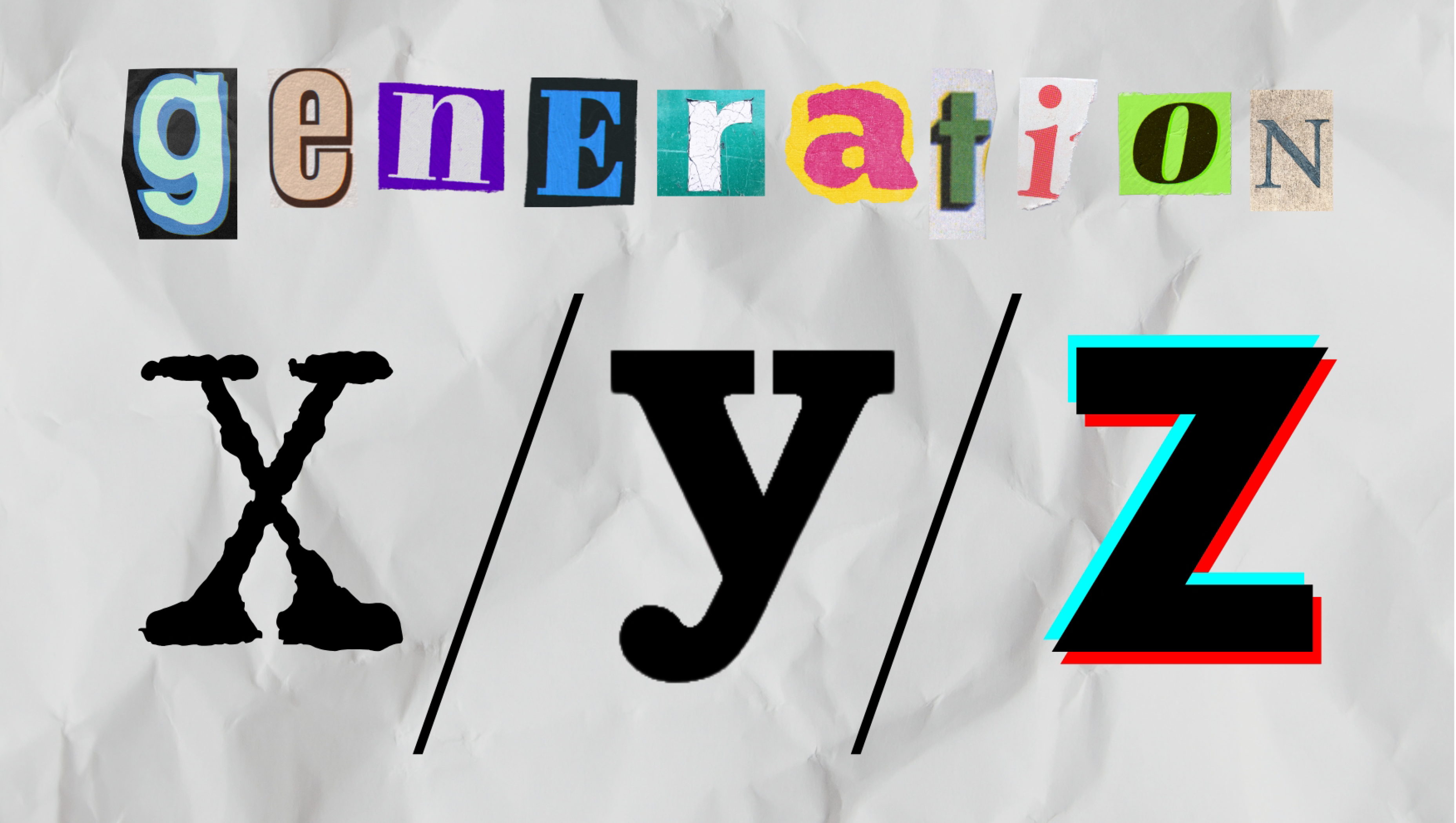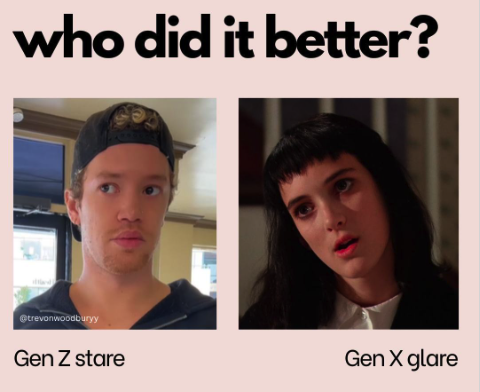
By Nikki Babri
When Gen Z students walk into Professor of English Annie McClanahan’s classroom, they encounter an unfamiliar subject: themselves. Her “Generation X/Y/Z” course flips the traditional academic dynamic, asking students to study their own generation with the same critical rigor they’d apply to ancient historical periods or classical texts.
The course examines three recent generations: Gen X (born roughly 1965-1980), millennials or Gen Y (1981-1996) and Gen Z (1997-2012). The result is a class where TikToks become primary sources, situationships warrant scholarly analysis and students discover that understanding their generational identity means examining the economic pressures, cultural shifts and inherited anxieties that have shaped their worldview.

“I’m really interested in the relationship between big conceptual categories (class, race, gender, etc.) and the smaller scales of individual lived experience," McClanahan explains. “The idea of a generation is, for me, one way those two scales intersect. Generations are about much larger groups or collectives, but they also help us make sense of our individual daily lives – what we believe, what we watch, what we wear, what we read, how we interact with technology, our politics and our perceptions of the past and future.”
A cross-generational conversation
The course deliberately begins with Generation X for a personal reason – it’s McClanahan’s own generation. “Because I’m interested in how we might all use generational identity to understand our lives, it’s important for me to bring my own experience into the conversation, and to use that as a starting point for a cross-generational dialogue,” she shares.
The first movie students watch together is the quintessentially Gen X film Reality Bites, which was particularly meaningful to McClanahan as a teenager. In class, she shares what the film meant to her at 16 versus how she perceives it now.

Second-year English major Andrei Hunt was surprised by how much the film resonated with him. “The fact that Reality Bites was so relatable reminded me that the young person’s perspective on the future and on being young hasn’t changed too drastically from the times of Gen X,” he explains. “I was happy to see that past generations have faced eerily similar existential issues in their young adulthood.”
The syllabus progresses through Gen X’s Reality Bites and millennials’ Mean Girls before arriving at Gen Z’s The Hate U Give, allowing students to trace how different generations have grappled with identity, relationships and social justice.
The course also examines how generations distinguish themselves against one another – millennials calling Gen X and Boomers the “Karen generation,” Gen Z mocking millennial side parts, debates about the “Gen Z stare.” McClanahan even brings insights from her 12-year-old Gen Alpha (2012-2024) daughter into classroom discussions, sharing perspectives on slang like “skibidi” and “brain rot” that prompt her Gen Z students to immediately distance themselves from the cringey younger generation. More than mutual teasing, these distinctions are how each generation comes to define itself.

But what interests McClanahan most is how Gen Z makes older generations nervous. Students compare sociological research about Gen Z with books claiming their generation is too fragile, too addicted to screens or uninterested in relationships. “These anxieties tell us more about the generation in power (Gen X and older millennials) than about the younger people they are ostensibly trying to describe,” she explains.
From TikTok to critical theory
While McClanahan provides a syllabus, class conversations are dominated by students. She weaves students’ observations into larger academic frameworks, revealing the theoretical significance of their everyday insights.
“One of the challenges of a class like this is that it’s trying to be maximally up-to-the-minute, but as someone who is quite a few decades older than my students, I don’t actually know their culture from the inside,” McClanahan admits. To bridge this gap, she has students submit TikToks and Instagram Reels to use as examples for class discussions.
During one class session, students explored relationship culture through their submitted videos. The conversation ranged from the proliferation of new relationship terminology (situationships, love-bombing, talking stages, ghosting) to generational patterns in divorce rates to the heteronormative bias in online dating advice.

Zoe Frederick, a second-year English major with an education specialization, found the course challenged assumptions she held about her own generation. “Based on what I have observed in popular culture, I had assumed that Gen Z was the most sex-positive generation there has been so far,” she explains. “However, the statistics we went over in class showed that Gen Z is apparently going through a ‘sex recession,’ which has older generations worried.”
But looking more critically at the data, Frederick and her classmates noticed the same information could be used to tell entirely different stories. Older generations frame a “sex recession” as evidence that Gen Z is antisocial or depressed, while Gen Z students themselves point to legitimate concerns about sexual safety and valuing relationships. “I think it is really interesting how the same statistics can easily be shifted to take on a new meaning based on perspective,” Frederick shares.
Even popular culture sends mixed messages. During a discussion, students contrasted the relatively modest sexual narratives in shows like The Summer I Turned Pretty with the hypersexualized world of Love Island, illustrating how media representations of Gen Z relationships vary wildly and rarely reflect students’ actual lived experiences.
Expanding whose stories get told
Rather than treating each generation as a monolith, the reading list challenges narratives that typically center white, cisgender, middle-class experiences. Students read Justin Torres’ We the Animals about growing up queer, biracial and working-class; Raven Leilani’s Luster about a Black millennial woman surviving paycheck to paycheck; and Ryan Lee Wong’s Which Side Are You On about being an Asian-American teen during the L.A. uprisings.

For students from marginalized communities, this inclusive approach is both validating and essential. “My personal experience as a part of the LGBTQ+ community has definitely shaped my experience in Gen Z,” reflects Sophia Brandt, a second-year English major and creative writing minor. “Especially considering that the number of Gen Zers who identify as something other than cisgender and heterosexual is higher than any other generation, it becomes more important to ensure that what we consider the ‘Gen Z experience’ includes queer narratives.”
Brandt’s perspective is one of many in the classroom. While most students are English majors of a similar age from California, they regularly reference their varying identities – first-generation status, socioeconomic background, sexual orientation, disabilities, race, immigration experiences – demonstrating how varied the Gen Z experience actually is.
Making sense of the world together
The course creates something rare in academic spaces: a classroom where students’ everyday lives become legitimate subjects of scholarly inquiry. “It’s very validating to be in this course and have open discussions about how current affairs uniquely affect Gen Z,” Brandt confirms.
Those current affairs include difficult topics like economic inequality, political polarization, delayed adulthood, mental health crises and climate anxiety. But McClanahan also encourages students to analyze social media, pop music and fandoms – subjects that might seem light or meaningless to older generations but largely define how Gen Z experiences the world.
Hunt found that examining their generation together built an unexpected sense of community in the classroom. “The best thing that this class does is create a sense of togetherness in dealing with all of the heavy issues we discuss,” he observes. “It’s an hour and a half of isolation from our phones. We get to be in a space outside of the world, spectating and making sense of it together.”
This is the first in a series highlighting innovative courses in the School of Humanities. Stay tuned for articles about other unique classes and sign up for our monthly newsletter.
